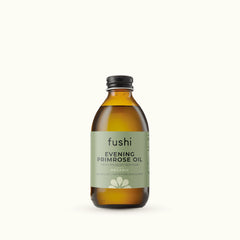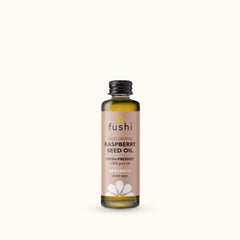Comedogenic oils
What does Comedogenic Oil mean?
Comedogenic and Non-Comedogenic oils refers to how likely an oil is to clog your pores. Comedogenic being the most likely and Non-Comedogenic being the least.
When you have skin that is prone to breakouts, the last thing you want do is put an oil on your skin that will clog your pores. However, oils do not have to be avoided and they can actually be a great addition to acne skin prone skin and skin care in general.
Face Oils
Facial oils give a boost of hydration to the skin and even people with oily skin can benefit from using them. Using oils can help regulate sebum production – just make sure they are not oils that will clog your pores. When dealing with skin care products, you will find many skin care ingredients that can cause or exacerbate acne prone skin. Those of us who deal with acne prone skin will want to stay far away from any ingredient that falls into the comedogenic category.
Acne prone skin is most often deficient in linoleic acid, so it is better to use products that contain higher levels of it. When linoleic acid is not available in the skin the sebaceous glands produce sebum with oleic acid, which is drier and firmer than healthy sebum. This dry and firm sebum can then easily become stuck and form blackheads and whiteheads.
Although, sebum is actually a really good thing. It is part of our skins natural protection barrier and provides us with hydration when our skin is too dry. One of the reasons you’re your skin gets thinner and dryer with age is because you begin to produce less sebum.
Oils bring fatty acids and nutrients to the skin. Linoleic acid is an Omega-6 essential fatty acid that the body cannot produce on its own, it must be taken from outside sources. The oils which are highest in linoleic acid content are also low on the comedogenic scale. These oils are Primrose oil, Grapeseed oil, Sunflower oil, Hemp oil, Sesame oil, Rosehip oil and Argan oil. However, it has to be said that all skin is different and unique. What may be good for one person may not work for another. It is all about trial and error regarding skin care and oils. It is important to bear this in mind when experimenting with oils. You have to find what works for you.

Comedogenic rating list from 0-5
0 - Will Not Clog Pores
1 - Low
2 - Moderately Low
3 - Moderate
4 - Fairly High
5 - High
Oils with a rating of 0 (will not clog pores)
Argan oil boasts some really amazing skin benefits along with the very low chance of clogging pores. Another reason to reach for this oil is its ability to treat acne and acne scars. Argan oil regulates the production of sebum which helps prevent further breakouts and its Vitamin E content helps fade scars and smooth out the skins texture.
Hemp seed oil has amazing skin softening and moisturizing properties that are perfect for those with oily sensitive skin types. Hemp oil can also reduce redness and inflammation associated with acne breakouts and is a great treatment for eczema, psoriasis, and dry itchy skin.
Shea Butter is 0 on the comedogenic scale. It contains tons of vitamins and minerals and is amazing for fine lines, wrinkles, and scars. Shea Butter can be melted down and mixed with your favourite essential oil or with another face oil to temper it so it doesn’t feel so thick.
Comedogenic Rating 1
Calendula oil is a carrier oil which has been infused with calendula blossoms and as such, it is difficult to determine its comedogenic rating. Although if infused with an oil high in linoleic acid it becomes a non comedogenic oil. Calendula itself is very healing for the skin and decreases redness, inflammation and soothes dry, itchy, irritated skin.
Camellia oil is a great oil to use for acne sufferers due to its strong antibacterial properties. It is also great to use for anti-aging as it tightens and smooths skin tone.
Castor oil is an oil which has strong detox and purging properties. It increases cell turnover which is why it is used as an acne treatment.
Pomegranate seed oil encourages new cell regeneration and helps reduce the signs of aging.
Raspberry seed oil has a low chance of clogging pores and it also protects your skin from the sun with a natural SPF. It absorbs well and has a high antioxidant content, and moisturises the skin.
Rosehip oil is a great cleansing and moisturising oil for acne prone skin. It is amazing for reversing hyperpigmentation, signs of aging, sun damage, stretch marks, and scars.
Oils with a comedogenic rating of 2
Baobab oil absorbs quickly and easily into the skin, effectively smoothing out rough dry patches and restoring life back into your skin. It’s a great oil for combination skin types with a low chance of clogging pores.
Black cumin seed oil has been used for centuries to promote good health. This oil is relatively well tolerated by most skin types. It is especially good for those with eczema and psoriasis as it calms inflammation and accelerates healing. It naturally softens, strengthens, and firms the skin. It is also great for treating scars and stretch marks.
Borage seed oil is an amazing skin regenerator due to its gamma linoleic acid content. Taking it internally helps maintain the reproductive system, balance hormones, reduce stress, and regulate the metabolism, but applying it topically is a great way to smooth out the complexion and moisturize the skin. Borage seed oil also reduces inflammation associated with certain skin conditions such as acne, eczema, and psoriasis. This oil is suitable for combination skin types that lean more on the oily side.
Jojoba oil is a great acne treatment for many because it mimics the consistency of our own sebum. It has a light moisturizing feel and absorbs well into the skin. This oil is more suitable for oily skin types as it helps balance the production of excess oil.
Sweet almond oil is a great oil to use for dry acne prone skin due to its emollient properties. It’s great for regenerating skin cells because it penetrates damaged cells and softens them allowing for better hydration. Sweet almond oil is suitable for sensitive skin types that are dry.
Tamanu oil is best known for healing acne scars and fading old acne scars. It has a thick consistency and is therefore better used as a spot treatment for problem areas rather than all over the face.
Comedogenic rating 3
Avocado oil is suitable for drier acne prone skin types but may still clog pores. However, if your skin tolerates this oil, it is amazing for hydration and skin tone renewal. Since it is a heavier oil, it may be best suited for use at night. Avocado oil is said to diminish pore size and remove impurities from the skin over time.
Sesame oil is another oil that has potent anti-bacterial properties that good for wound healing and killing acne causing bacteria. It’s overall, a pretty balanced oil, but the stearic acid causes it to be a bit comedogenic for a lot of people. It may leave an oily residue on the skin.
Comedogenic Rating 4
Carrot seed oil is great for improving its tone, elasticity, and overall appearance. It slows aging and is wonderful for calming irritated skin. However, it’s high oleic acid content makes is unsuitable for acne prone skin types.
Comedogenic Rating 5
Coconut oil is a favourite oil amongst most people for its amazing health promoting and beautifying properties. It smooths skin and reveals a fresh glowing complexion for those who tolerate it well. Most however, do not tolerate coconut oil well on their face, so if you have acne prone skin, you may want to steer clear of this oil.
Wheat germ oil is one which very few people can tolerate on their face. It is oil which almost guarantees a breakout when applied topically. Although it has great scar reducing and healing properties of any oil due to its very high Vitamin E content.







